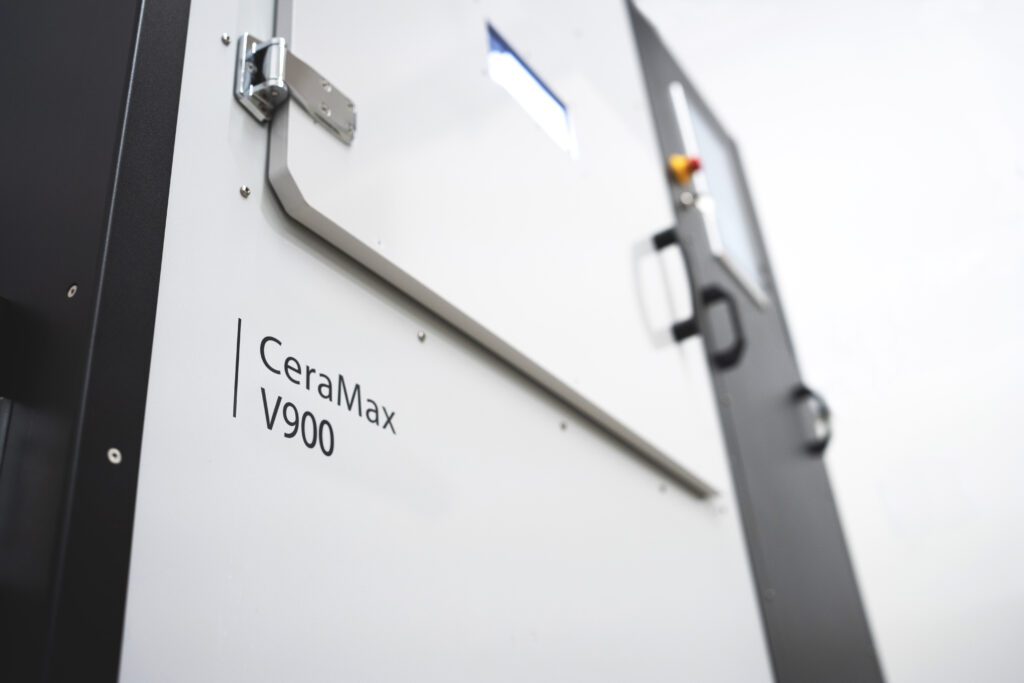- Technical collaboration agreement will focus on innovating high-temperature ceramics processing via the use of Lithoz 3D printing technology
- The new process could enable laser slurry drying of non-oxide ceramics with high refractive indexes
- ORNL: “By combining our expertise with Lithoz 3D printing capabilities, we have the potential to change the concept of high-temperature ceramics processing.”
5th December 2023: Vienna, Austria. Lithoz GmbH and the U.S. Department of Energy’s (DOE) Oak Ridge National Laboratory have signed a Cooperative Research and Development Agreement (CRADA) to use Lithoz’s 3D printing technology to further explore the processing and additive manufacturing of non-oxide ceramics.
Based on Laser-Induced Slipcasting (LIS) technology, the Lithoz 3D printer uses laser slurry drying, or net shaping, technology to guide computer-controlled light amplification by stimulated emission of radiation that desiccate liquid-suspended controlled layers of solids. The goal of the cooperative agreement is development of the technology to shape non-oxide ceramics with high-refractive indexes, such as silicon carbide, for use in extreme temperature applications.
Lithoz recently launched its LIS technology to produce parts that are far more complex in geometry and larger in scale than can be achieved using conventional moulding techniques. By incorporating intricate inner channels and 3D-printable complex designs, the parts it can produce are lighter and more efficient when compared with current methods. This technology is also capable of increasing the range of materials that can be printed by processing dark ceramics, such as silicon carbide and silicon nitride, in a way that is unachievable with other processes.
The goal of this project is to scale up the production of ultra-high temperature ceramic parts to an industrial level. The team will look to develop this technology by assessing its technical capabilities using a common oxide-ceramic material. This will involve printing and debinding the primary material – such as silicon nitride and silicon carbide, two highly in-demand substances for aerospace applications – from the moulded component. Using heat, the substance will be formed into a solid material in a process known as sintering. The performance and properties of the printed materials will then be tested.
“This project will build on ORNL’s years of research in developing and testing high-temperature materials and ceramics,” said Corson Cramer, Extreme Environment Materials Processing Group staff scientist at ORNL. “By combining our expertise with Lithoz 3D printing capabilities, we have the potential to change the concept of high-temperature ceramics processing for heat exchange, aerospace and defense applications.”
About Oak Ridge National Laboratory
UT-Battelle manages ORNL for the DOE’s Office of Science, the single largest supporter of basic research in the physical sciences in the United States. The Office of Science is working to address some of the most pressing challenges of our time. Research for advanced manufacturing projects is being performed at the DOE Manufacturing Demonstration Facility. The facility is home to the MDF Consortium, a nationwide group of collaborators working with ORNL to advance U.S. manufacturing technologies under the guidance of the DOE Advanced Materials & Manufacturing Technologies Office. For more information, please visit energy.gov/science and energy.gov/eere/ammto/ammto-programs.
Oak Ridge National Laboratory Contact: Kevin Duncan, +1-865-341-3153, duncankl@ornl.gov

